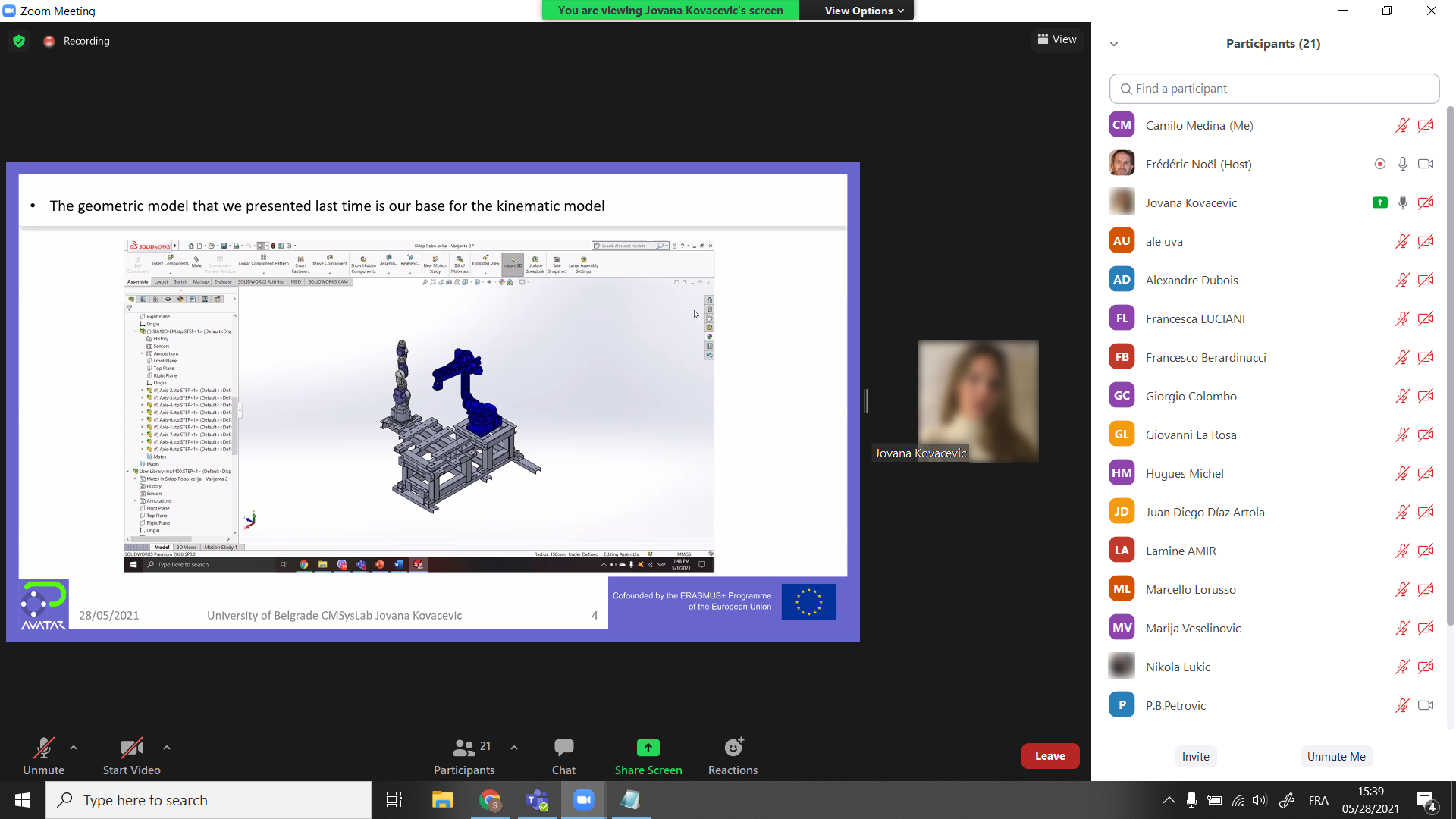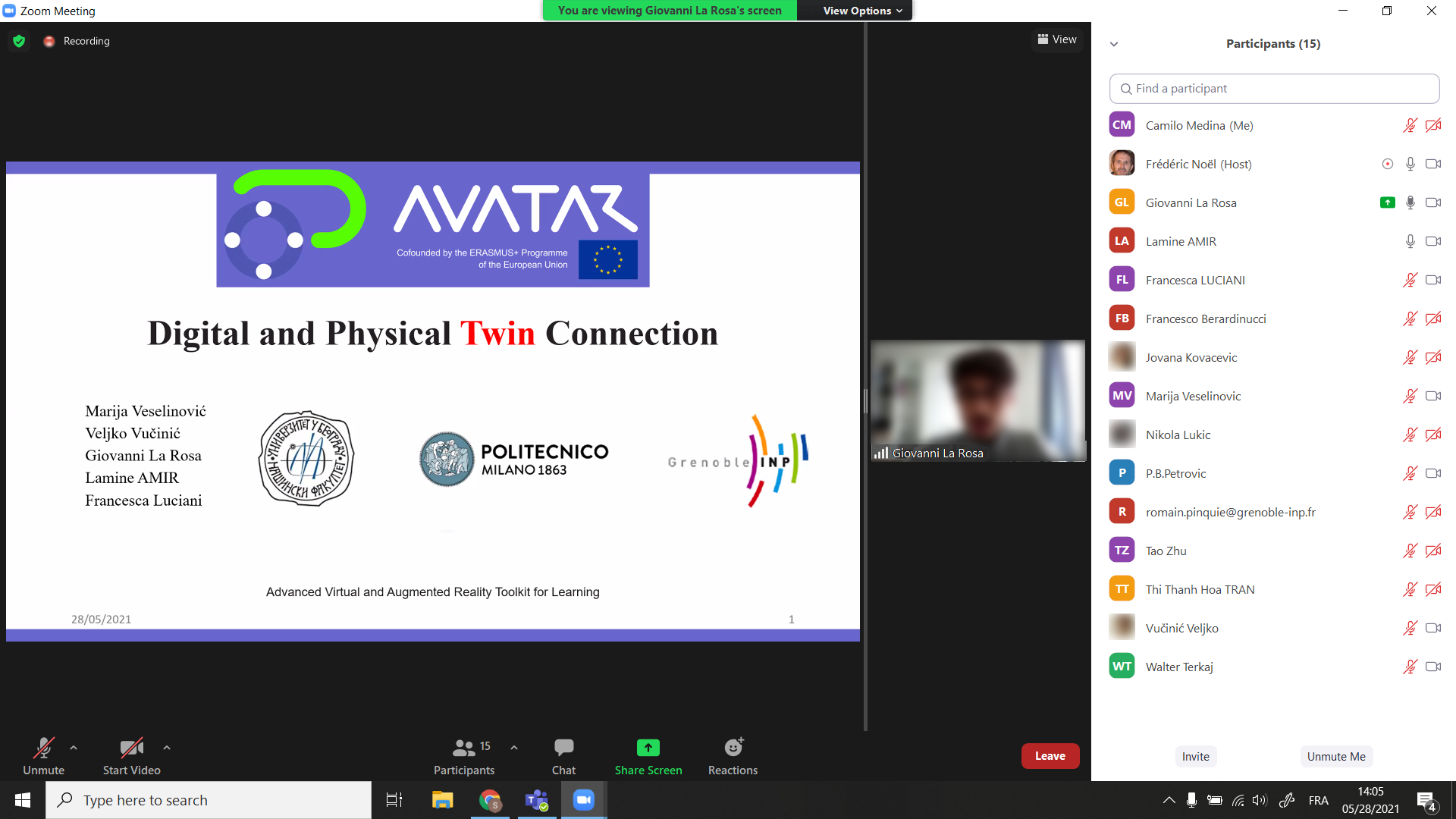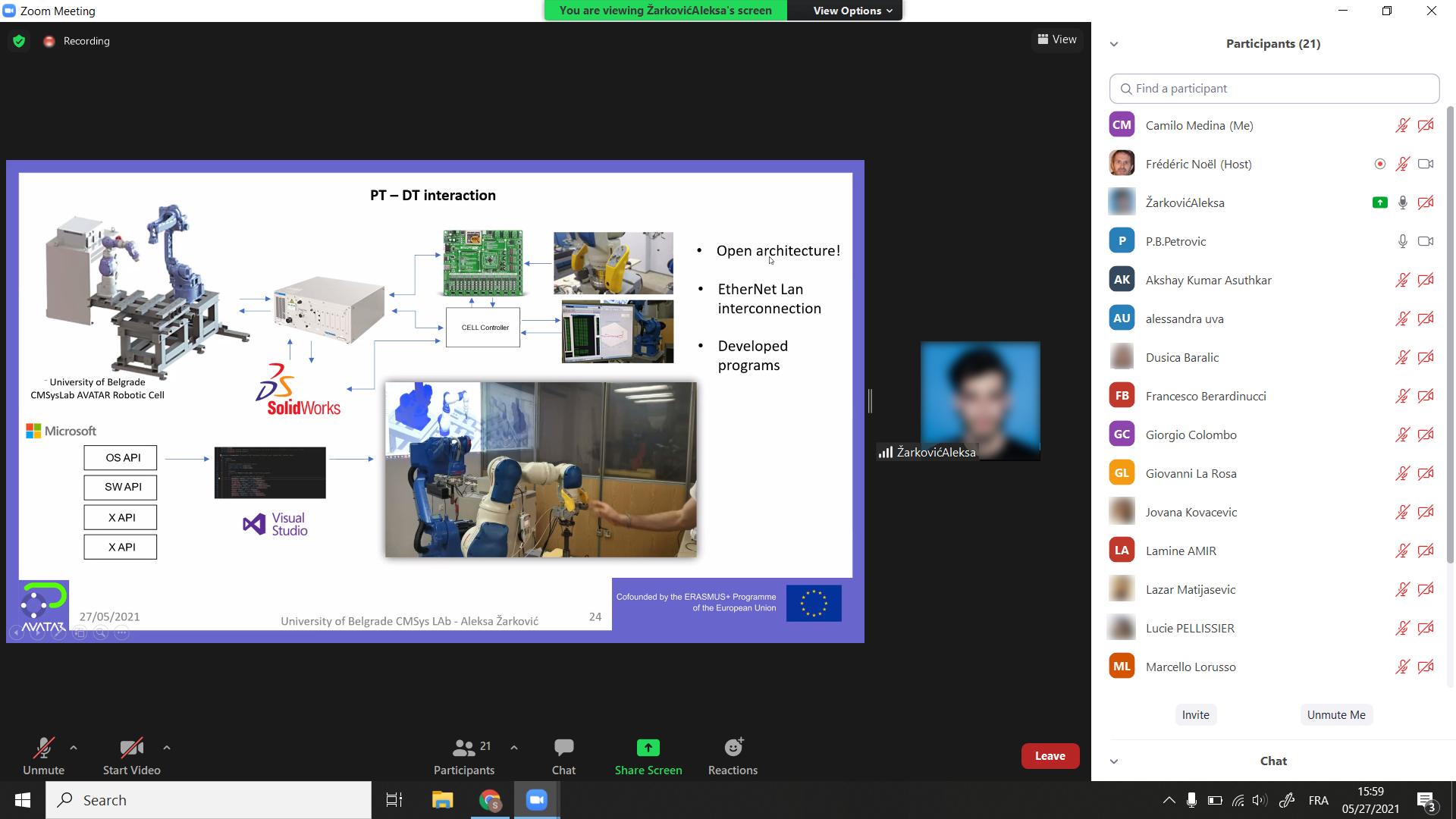Joint Learning Lab 2021 - JLL 2021
Specific Organisation
The joint learning lab in Grenoble was very specific for two main reasons:
-
It was the first year of the project and the model for the JLL was still under construction. The semester began with independent student projects and the convergence on a common training during the JLL was not ready. Nevertheless, the students worked together for a week to converge on a group presentation. Individually, they underwent in-depth training and the JLL helped them to share their experience.
-
The JJLL was organised in May 2021, from 26 May to Monday 31 May, With the peculiarity that Monday was a holiday in France (Wit Monday), thus delaying the start of the activities to Tuesday, during the hard confinement period. The full JLL was organised as a remote event. Students from Serbia and Milano were not able to join Grenoble physically and to experience the specific local equipments.
Specific Objectives
Within such a context two main objectives were reached during the JLL:
-
Finalise the avatar semester: every student was trained to a specific aspect of virtual reality and augmented reality for manufacturing objectives. The teams of students were expected to make a common presentation by merging their experience to develop a specific topic :
- Human modeling + machine modeling
- Kinematics + coding + Gcode
- Physical and Digital connection
- VR, AR and animation
-
To enhance collaboration between students: the students were expected to organised international teams of 4 students
Week organisation
Four discussion groups were organized, each group, composed of four or five international students, had the opportunity to present the knowledge and skills developed throughout the program. The discussion groups were classified according to four thematic topics listed before.
The presentations had a duration of one hour and were followed by a discussion session of 30 minutes, space used to discuss in depth the work done and to answer the questions that emerged. Each presentation consisted of both common parts, areas where collaboration and teamwork played a major role, and individual parts, aimed at highlighting the specific contributions of each student.
To accommodate the scheduling constraints of each university and student, a variety of time slots were arranged for the presentations, and the selection was entirely free choice.
The available time slots were as follows:
| Date | Time |
|---|---|
| Tuesday, 27 May | 14:00 - 15:30 |
| Tuesday, 27 May | 15:30 - 16:00 |
| Friday, 28 May | 09:00 - 10:30 |
| Friday, 28 May | 10:30 - 12:00 |
| Friday, 28 May | 14:00 - 15:30 |
| Friday, 28 May | 15:00 - 17:00 |
| Monday, 31 May | 09:00 - 10:30 |
| Monday, 31 May | 10:30 - 12:00 |
Each group was responsible for preparing a common presentation using collaborative tools and had the freedom to organize themselves as they saw fit. Teachers and assistants were available for questions via a continuous Zoom Meeting, and the final deliverables were received on Monday, May 31.
Group One – Human modeling + machine modeling
Group one selected slot, May 28 from 10h30 to 12h00
| No. | Name | Country |
|---|---|---|
| 1 | Tao Zhu | Italy |
| 2 | Pavel Popov | Italy |
| 3 | Dusica Baralic | Serbia |
| 4 | TRAN Thi Thanh Hoa | France |
| 5 | Desgouttes Thibaut | France |

Group Two - Kinematics + coding + Gcode
Group two selected slot, May 28 from 15:30 to 17h00
| No. | Name | Country |
|---|---|---|
| 1 | Alessandra Uva | Italy |
| 2 | Juan Diego Diaz | Italy |
| 3 | Jovana Kovacevic | Serbia |
| 4 | Hugues Michel | France |
| 5 | Dubois Alexandre | France |

Group Three - Physical and Digital connection
Group three selected slot, May 28 from 14:00 to 15h30
| No. | Name | Country |
|---|---|---|
| 1 | Giovanni La Rosa | Italy |
| 2 | Veljko Vucinic | Serbia |
| 3 | Marija Veselinovic | Serbia |
| 4 | Francesca Luciani | France |
| 5 | Lamine Amir | France |

Group four - VR, AR and animation
Group three selected slot, May 27 from 15:30 to 17h00
| No. | Name | Country |
|---|---|---|
| 1 | Akshay Asuthkar | Italy |
| 2 | Aleksa Žarković | Serbia |
| 3 | Lucie Pellissier | Grenoble |

Final reports
Every groups were expected to present their work through workflow models, to provide image and videos to demonstrate they results and to create a reusable knowledge for the next years. It encouraged the professor teams to develop standard workflows that could be reused for the second year of activity.
Application with students
Below is a list of the projects that were carried out with the students during the semester.